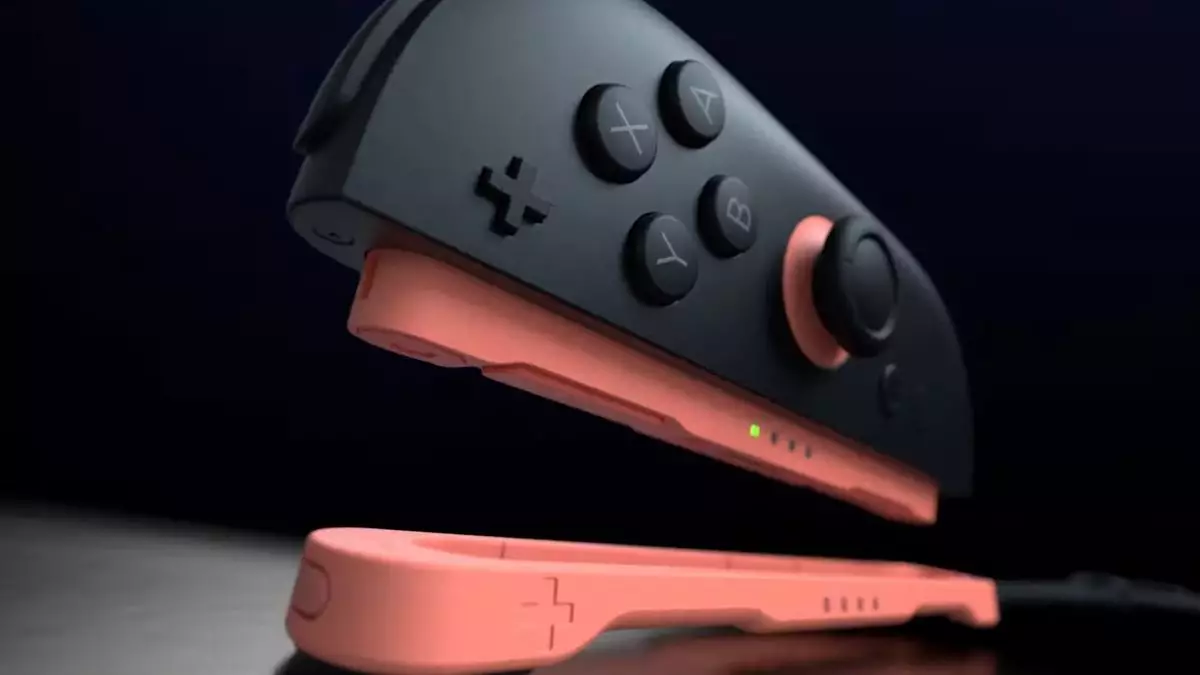The gaming industry is on the brink of a new era with the anticipated launch of the Nintendo Switch 2. Amidst the excitement, a revealing patent has garnered significant attention—not merely for its innovative potential, but for how it challenges traditional notions of gaming input. The new functionality proposed for the Joy-Con controllers invites gamers, particularly those accustomed to PC gaming, to reconsider how they interact with consoles.
Unveiled through a patent filed earlier this year, the concept introduces a mouse-like functionality to the Joy-Con controllers. This development is generally formatted in dense legal language, making it somewhat challenging for the average consumer to digest. However, the key takeaway is clear: the Joy-Cons are envisioned to include a “sensor for mouse operation,” allowing for a unique dual-input method that could revolutionize gameplay. Such an adaptation reflects not just an evolution in hardware but represents a significant shift in gaming philosophy.
Equipped with skate-like attachments, the Joy-Cons are designed to glide smoothly over surfaces, reminiscent of a gaming mouse. This allows players to manipulate game elements with precision and ease that is often reserved for traditional PC gaming setups. Moreover, using both controllers in tandem could appeal to co-op enthusiasts and single-player puzzle solvers alike, potentially opening doors to new kinds of games and gameplay dynamics.
Nintendo has consistently been at the forefront of innovative multiplayer experiences. The introduction of the Joy-Con mouse functionality aligns with the company’s penchant for creativity in cooperative gameplay. Titles like “1-2-Switch” and “Snipperclips” exemplify how Nintendo has leveraged unconventional control schemes to foster social gaming experiences. The new Joy-Con capabilities could enhance these multiplayer dynamics, providing fresh avenues for gameplay strategies.
The inherent design of the Joy-Con not only merges traditional gaming controls but could also lead to myriad possibilities for creative game designers. Imagine puzzle games that require simultaneous manipulation of multiple elements—this could redefine engagement, offering players an immersive experience that encourages collaboration or competition in entirely new ways.
Historically, Nintendo has embraced gyroscopic technology as a cornerstone for interactive gaming. The Wii’s pointer controls, followed by the integration of gyroscopic sensors in the Wii U and Switch, have been hallmarks of Nintendo’s approach. However, the exploration of a mouse-like functionality diverges from this tradition, raising questions about the future direction of Nintendo’s technology in gaming.
In an environment where FPS and action games thrive on precision, the introduction of an alternative input method could attract seasoned PC gamers who find themselves drawn to the Nintendo ecosystem. This breadth of control options could enhance gameplay balance, giving gamers the ability to choose their preferred style of engagement—whether through traditional methods or the newly introduced mouse functionality.
Interestingly, the patent hints at the possibility that these Joy-Cons could connect with devices beyond the Nintendo Switch 2. This opens up speculation regarding their potential compatibility with future consoles or even PC platforms. Should Nintendo choose to implement a broader accessory functionality, akin to its Labo series, it could extend the Joy-Con’s appeal significantly. Imagine a scenario where gamers can seamlessly transition between different types of gaming environments with the same controllers.
As details emerge from the patent, the excitement of integrating such technology into everyday gaming experiences grows. While some gamers may be skeptical about the practical application of mouse inputs on a console, the foundational essence of innovation remains a thrilling prospect.
As we stand on the cusp of the Nintendo Switch 2’s launch, the combination of nostalgia and innovation stirs a palpable excitement. The proposed functionalities of the new Joy-Cons may be in their infancy, yet they signal Nintendo’s commitment to evolving the way we interact with games. These fresh control schemes could be the refreshing twist that breathes new life into the beloved franchise, bridging the gap between dedicated console gaming and the precision of PC gameplay.
In sum, the blend of creativity, originality, and experimental technologies could define a new chapter in Nintendo’s storied legacy. As players await the next big reveal, the community remains eager to explore what the future of gaming holds—with its unconventional input methods and a promise of engaging, immersive experiences that adhere to the spirit of play. The challenge now lies in how effectively these innovations translate into tangible gameplay.
In the mutable landscape of gaming, Nintendo’s willingness to innovate could set the stage for a future that harmonizes the tactile joy of console gaming with the precision-driven demands of contemporary play styles. Ultimately, gamers will need to remain open-minded as they embrace yet another ‘weird’ control scheme from one of the industry’s most inventive companies.

